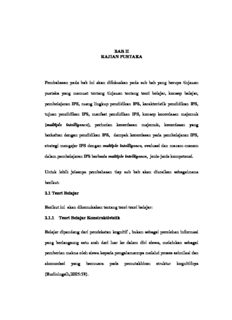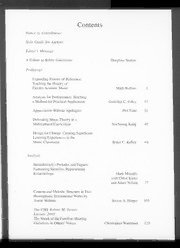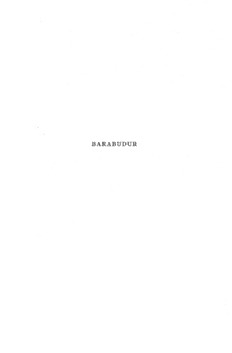
Barabudur: Archaeological Description PDF
Preview Barabudur: Archaeological Description
BARABUDUR BARABUDUR • * ARCHAEOLOGICAL DESCRIPTION BY "z- rY-" N~J)t~KROM PROFESSOR IN THE UNIVERSITY OF LEYDEN IN TWO VOLUMES VOLUME I WITH A FRONTISPIECE IN PHOTOGRAVURE THE HAGUE MARTINUS NIJHOFF 1927 All rights reserved Printed in the Netherlands The English edition with 442 plates is strictly limited to IOO numbered copies CONTENTS PREFACE. VII CHAPTER I. FOUNDATION AND HISTORY OF BARABU:QUR. 1 II. THE RELIEFS ON THE COVERED BASE . 47 THE FRIEZE OF THE BASE. • • • . • 93 III. THE STORY OFTHE LIFE OF BUDDHA 99 (First gallery, chiefwall, top series) IV. THE AVADANA'S AND ]ATAKA'S .• 230 Part I. (First gallery, chief wall, lowest series) V. THE ]ATAKAMALA. • • . • • • • • • • 312 (First gallery, balustrade; top series, first part) VI. THE AVADANA'S AND ]ATAKA'S . • . • • . • • 396 Continuation and conclusion. (First gallery, ba lustrade, top series, second part; lowest series; secondgallery, balustrade) SUMMARY of the 244 plates of parts I-7 with referencetothe corresponding text (vol. I) Series Plates Text Part I Groundplanwithsituationofreliefs . . . A Verticalsectionshewingpositionofreliefs B Viewofthemonument C 0 • • 0 • View ofthepartly-exposedbase . D Reliefsofthecoveredbase . . 0 I-XX 47-93 0 2 Decorativereliefs: Friezedecorationofthebase . D.O I-V Decorationof theoutsideofbalustrades DoB' VI-IX Decoration between the reliefs of the first gallery, balustrade,lowestrow. . D.B.I.b X 0 • 0 • • Decoration between the reliefs 2d gallery, balustrade . . . . . . . . . . . . . .. D.B.II XI-XIII VI CONTENTS Series Plates Text Decoration between the reliefs 3rd gallery, . balustrade D.B.III XIV-XV Decoration between the reliefs 4th gallery, balustrade D.B.IV XVI-XVII 94-98 Part 3 Viewin the 1stgallery . E Reliefs of the 1st gallery, chief wall, top row. Life-storyoftheBuddha . La I-LX 99-229 4 Reliefsofthe1stgallery,chiefwall,lowestseries. Avadana's and Jataka's Lb I-LX 230--311 5 Reliefs of the 1stgallery,balustrade,topseries. Jatakamala and other Jataka's . LB.a I-XLII 312-432 6 Reliefs of the 1st gallery, balustrade, lowest series. Avadana'sand]ataka's LB.b I-XX 432-462 . 7 Viewin the2ndgallery. F Reliefsofthe2ndgallery, balustrade.Avadana's and Jataka's. II.B I-XIX 462-478 PREFACE Duringthegreatrestoration ofBarabudur(I907-I9II),acompleteseries of photographs of the monument was made; they were intended as illus trationsforanewmonographtosucceedtheonebyLeemansinI873. The ques tion of how this monograph should be compiled was discussed already in I909. It was evident that a complete explanation ofall that is depicted on Barabudur would beimpossible,' therefore it was atfirst proposed that only an architectural description should bepublished, while at the same time the reproductions ofthereliefs shouldbeplacedinthehandsofcompetentscholars whoweretocollectdata from all available sourcesfor afuture archaeological description. The Government however,supported by expert advice from theInstitutes, considered it advisable for the benefit offurther research, that thearchaeo logicaldescription shouldappearat once,eventhoughfor thepresentitwould beincomplete. Therefore in I9II the "Koninklijk Instituut voorde Taal-, Land- en Volkenkunde van Nederlandsch-Indie" was commissioned topu blish both parts of the monograph. The architecturalpart was assigned to Mr. T. van Erp who as director of the restoration work was eminently qualifiedfor the task. This part is still inpreparation. For the archaeologicalpart Dr.].Ph.Vogel had already beenapproached in I9I2, hewas at that time Superintendent ofthe ArchaeologicalSurvey in BritishIndia. InI9I4heundertookthework, butafterbecomingProfessorat Leyden hewas obligedin I9I5 toresign the task,which was thenentrustedto the present writer. Dr. Vogel's intentionwastomakethedescription ascompleteaspossible by apreliminary-naturallyverylengthy-researchintoSanskrit, Tibetanand Chinese literature, but I have considered it more suitable to begin by record ing allthat is known sofar aboutthesignificanceofBarabudurandwhatcan begainedfrom thesources available at thepresent day. Dr. Vogel undertook to~ontinue his study ofthe documents above-mentioned, while the author of this work compiled the archaeologicalsurvey which was completed in I9I8 VItI PREFACE and under the authorization of the Netherlands Government waspublished by theKoninklifk Instituut in I920. . An English edition ofthis workwastohavebeen includedin thegovern ment publication,for whichpurpose alarger number of copiesoftheplates was printed than was requiredfor the Dutcb edition. Howeverthe Govern menteuentuallydid notundertakethis andtheplates weretaken overbyMr. Nijhof], publisher at theHague, whocharged himselfwith theentirepubli cation of the English edition at his own expense. This English edition is not in allrespects the sameas theDutch text. To begin with though closely following the Dutch it is considerably curtailed withregardtothedescriptionofreliefsthatarestillunidentified;theseabridge ments are shewn in the notesat thefoot ofthepage, sothat theDutch text can beconsultedwhen necessary. Secondly I havebeen able to supplement the text here and there with references toliteraturethathadbeen overlooked and to new books and papers that havebeenpublishedsinceI9I8.In some cases theseareworkedinto thetext, otherwise they aregiven in thenotes. Knowing that the examination of Barabudur is far from complete, the author is well awareof thefact that this work can beonly of a temporary character. The portfolioofplates will always retain its value and thearchi tecturaldescriptionmay achievesomethingdefinite. The archaeologicalpart [ulfils a more humble task; it is intended for an expedient tofurther in vestigation which it hopes to assist byrecording thepresentposition of re searchatBarabudur:whatis alreadyestablished,whatisdoubtfulandwhatis still altogetherobscure. The soonerthis bookshallbeoutofdate, thesoonerit will haveachieved its purp·ose. Leyden, December I926 N.]. KROM CHAPTER I FOUNDATION AND HISTORY OF BARABUl!UR NamoBuddhayal HailBuddha! Nowordsmore suitablethan these could be found withwhich to begin our description of this mighty monument. How often they must have echoed through the.galleries and over the terraces of the Barabudurl To comprehend fully the meaning of this most splendid creation of Hin du-Javan culture, we must transport ourselves, as far as possible,into the mind and spirit of those who 1100years ago, worshipped reverently at the feet of"theLion ofthe <;akya-race, the Omniscient, the Protector of the Earth in divine majesty" 1). The grandeurofthe Barabudur, -.and everyvisit made confirms the impression - is something immense, sphinxlike, incomprehensible and yet so fascinating. It overpowers us with a sense of our incapacity to give an adequate description of is, its enigmas are too many andtoo great for usto solve,andyet it exercises sucha powerfulcharmoverus, lays such hold on the mind that we are irresistibly compelled to use all our powers to discover something of its mysterious being. This impression may be only personal. Many and various are the opinions expressed by different visitors during the last century and not a few have been published; I will refrain from quotations, but it is remarkable that even among the most able judges, the first impression was not always favorable. Brumund, the best authority of his time on Javanese antiquities, speaks of it as "a gloomy, depressing,rathersquat ~)Uilding"2); Foucher,theartexpertonBuddhisticonography, compares It to a badly risen pie 3).These unfavorableopinionsmustbecreditedas .) Thesewordsare takenfrom Nagarakrtagama, Canto43. I) Seep.551of Leemans' monograph. . I) Bull. Ec. Fr. Extr.Or.9 (1909) p.4. Also Yulein Journ. Asiat,Soc. of Bengal31(1862) p.20says..At firstsightitseemslittlebetterthana vastandshapelesscairnofstones." 2 FOUNDATION AND HISTORY OF BARABUJ;>UR thehonest expressionoftheeffect produced,andare worthfar more than the insincere praise and bombastic admiration, met with elsewhere, for example in the "Barabudur by Moonlight" which descends to the com monplace. We givean instance of genuine admiration in the simple language of the soldier Hoepermans. "TheTemple here", he writesin 18661 "this ), splendid work of art, the glory of old Java, stands in its grey antiquity loaded with images and festoons'; built up in storeys and galleries, re presenting the wholelife and acts of Buddhain carved reliefs; the mag nificence, the great skill, the genius, the conception, all that was in and around this old temple is far beyond imagination, no wonder it draws people from all parts of theworld to see it. Lovers of art and antiquity will find all they want in the study of this old religion pourtrayed so vividly, in so many forms; - those who know the arts must exclaim "0 Javans oftheages what mightyartists you were!" These words, not written for publication, but only for the eyes of his chiefin a report,wellexpresshowdeeplyanordinaryman was moved by the grandeur of the Barabudur. There have been many others, who have expressed themselves, may be with more elegance, but few as ' vividly. The appreciations come almost without exception from the West. Not until quite recently has the Javan learnt to raise hiseyesto the memorial ofhis great past; fortunately among the feware somewho are sensitive to the devotion which this sacred edifice arouses 2). It has often been remarked that the founders of the Hindu-Javan temples bestowed great care on the choice of a site for theirerection and generally succeeded in laying hands on most beautiful positions. This is particularly noticeable of the Barabudur. The natural hill round which the templeis built, is situatedin a beautifullandscape, the centre of the fertile plain of Kedu, surrounded by a decorative circleofmount ains. Through the green country where groups of palm-trees mark the position of the villages, flows from N. to S. the Praga, over which river the road from the E. leads to the temple not far from where itreceives the waters of the Ela, next most important river of Kedu, The river, so deep in its bed, cannot now be seen from the top of Barabudur, though at such a short distance away; the only thing which strikes the eye in thewholestretch ofplainison the N. theTidar ofMagelang, the smooth round hill known to the natives as the head ofthe nail that holds the is land of Javafast to its place among the great waters.Theplainisbound- .) See Rapp.Oudh.Dienst 1913p. 131. t) ForexampleNotoSoerotoinHetNed.Ind.Huis,OudenNieuw,2(1914)p.85.
The list of books you might like

The Sweetest Oblivion (Made Book 1)

Mind Management, Not Time Management

As Good as Dead

Haunting Adeline

Photography Second edition

Sociological Forum 2006: Vol 21 Index
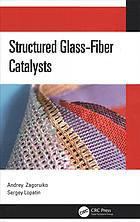
Structured glass-fiber catalysts

Live and let live
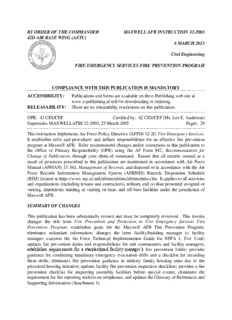
BY ORDER OF THE COMMANDER MAXWELL AFB INSTRUCTION 32-2003 42D AIR BASE WING ...

Cento Anni di Ricerca Petrolifera(1)
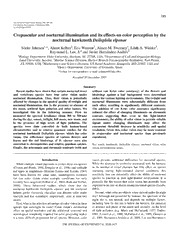
DTIC ADA519442: Crepuscular and Nocturnal Illumination and Its Effects on Color Perception by the Nocturnal Hawkmoth Deilephila elpenor
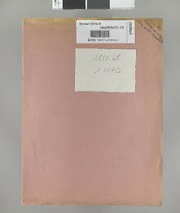
Vitis vinifera subsp. vinifera cv. Marselan
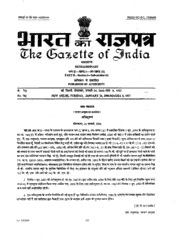
Extraordinary Gazette of India, 2006, No. 27

Economics: A Primer for India

Meet the Masters

Greek Government Gazette: Part 4, 2006 no. 465

Project 1 - Workbook (3rd Edition)

Børns angst for venepunktur
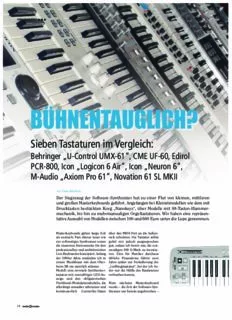
bühnentauglich?
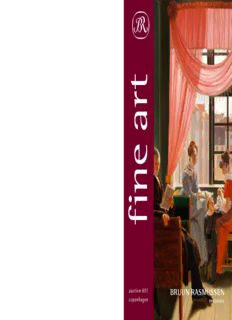
bruun rasmussen fine art + antiques
![Algebra [Lecture notes] book image](https://cdn-2.pdfdrive.to/media/content/thumbnails/247316f0-0428-4411-ac4b-9884dd394275.webp)
Algebra [Lecture notes]

